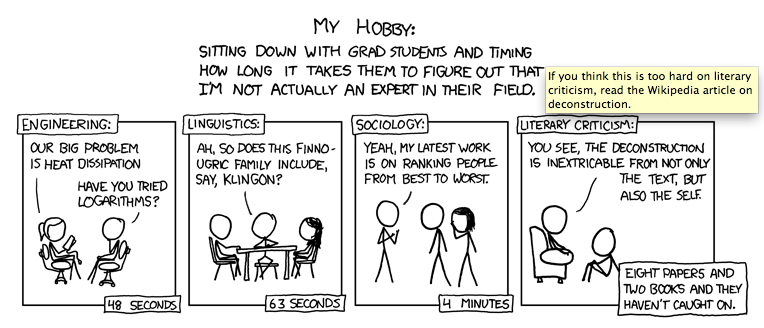
Image Credit: xkcd
I’ve been following the webcomic xkcd for the better part of my adult life, despite its warning that it may contain “strong language (which may be unsuitable for children), unusual humor (which may be unsuitable for adults), and advanced mathematics (which may be unsuitable for liberal-arts majors).” (Clearly, I was always already a liberal arts major, any way you slice it.) Randall Munroe’s bare-bones aesthetic consistently privileges an idea above the attached illustration; each entry thrives on an invented ethos of the supremacy of text to convey this idea, rather than the illustration itself. This ethos is also heavily grounded in an empirical interest in physics, mathematics, and programming culture, and this empiricism translates quite cleanly into any comment the comic makes on the condition of being human; that is, that it is always based in lived experience, but that this experience is best crystallized in the juxtaposition of concrete, minimalist illustration and sparse but highly suggestive prose. Its only flourish is that each comic contains a “hidden” joke in the roll-over text—often one that works to undo the rhetoric of the initial panel.
Recent comments
2 years 29 weeks ago
2 years 44 weeks ago
2 years 44 weeks ago
2 years 50 weeks ago
3 years 4 weeks ago
3 years 4 weeks ago
3 years 4 weeks ago
3 years 6 weeks ago
3 years 6 weeks ago
3 years 6 weeks ago